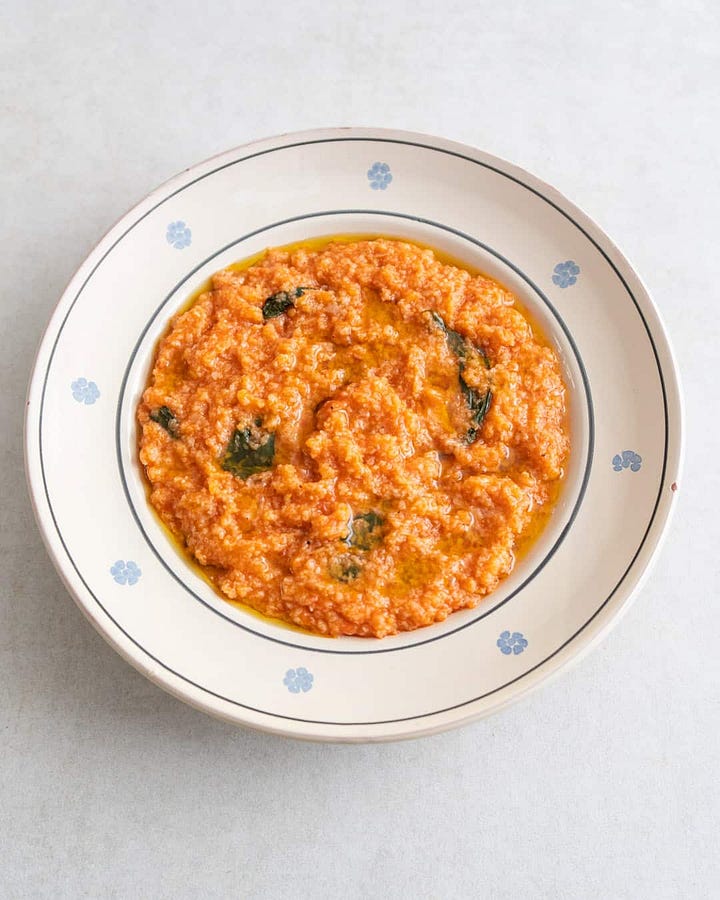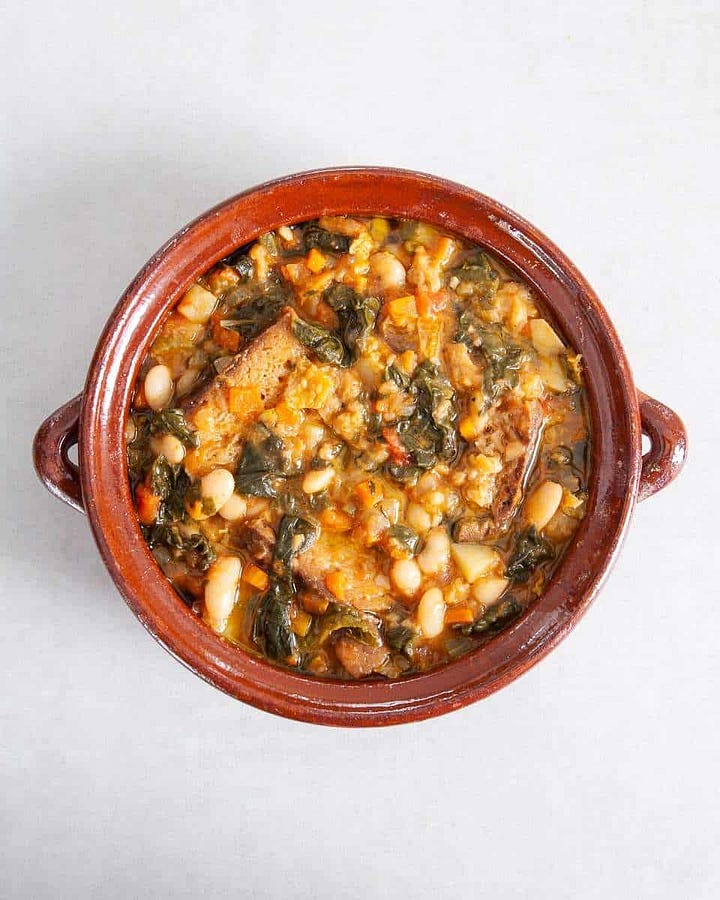When I visited Tuscany for my YouTube series Vegan Cultures, I stopped by I Seminanti, a bakery that makes traditional bread using ancient grains. Now, I’m well aware that this region’s contribution to the world of bread is generally not well-loved. But what I found and tasted defeated any stereotypes.
Tuscan bread is notorious for being saltless. Frustrating, when you visit the region for the first time and bite into a plain piece of the crusty loaf to confirm a rumour you secretly wish wasn’t true. Yes, that first bite might indeed be underwhelming. It lacks salt. But there are a few possible reasons for that, though no consensus on the actual truth.
Some mention the historic salt war between Florence and Pisa. Positioned near the sea, Pisa controlled the salt trade in Tuscany. During disputes between the two cities, Pisa's salt taxes soared, leading the people of Florence to bake bread without adding any. Then, there’s the explanation that this type of bread is often paired with heavily seasoned staples and rich flavours of the region, like cured meats, sharp cheeses, spicy olive oil or the sweetest tomatoes. Others argue that omitting salt allows the bread to go stale quicker, turning it into an ingredient that can be used in other dishes. The way food evolves, it’s most likely a combination of all three. Despite the culinary allure of these explanations—a concept that usually easily tricks my mind into wanting to like what I’m about to taste—when you bite into the bread by itself, something is still missing. Or so I thought…
It all changed when I arrived at I Seminanti. After spending the early morning hours watching the bakers turn three ancient grains into three different types of loaves, I learned that they do bend tradition just a little bit by adding the tiniest pinch of salt to the dough. It’s too little to taste in the finished loaf and used only to aid the fermentation. Then, it was time to bake. "The oven is shaped like an egg," the owner and baker Emmanuele said, gesturing to the curved stone structure of the wood-fired oven, half of it buried underground. "Life is born in the egg. Bread is born here in the oven."
Once the finished loaves emerged, they indeed became symbolic of life. It all began to make sense. Turns out, it’s not the salt that was missing. It was the flavor of the grains. Here, in the rural countryside of Tuscany, the wood-fired bread I tasted lacked nothing. It tasted unsalted, but not unseasoned.
In the old days, this kind of bread was the norm. And though people may not have been aware of the outstanding quality of what to them was the only kind of bread, it still held immense value. Most would make their own doughs from scratch, fermenting and shaping them at home and then dropping them off at communal ovens to be picked up later that day. With so much time, energy and resources invested, wasting any of it was simply not an option.
Italy’s Cucina Povera
This perception of bread is the bedrock of so many recipes in Cucina Povera, “the kitchen of the poor.” It's Italian cooking at its most honest—a way of making do with what's available, stretching what’s on hand and wasting nothing. It’s the art of turning yesterday’s bread into today’s dinner, drawing out flavor from humble ingredients and showing that a meal doesn’t need cheese, meat or dairy—all expensive ingredients—to be rich. Even when bread becomes stale or rock-hard, Cucina Povera shows us there’s always room for a culinary Renaissance, like Ribollita, where days-old bread meets beans and greens in a slow-cooked broth, or Pappa al Pomodoro, where it’s brought back to life in a rich tomato soup.


But why talk so much about Cucina Povera, if this newsletter is about a French-inspired Panade? Well, turns out, the very concept of Cucina Povera applies to all cultures around the world, including France.
French peasant cooking
If Ribollita and Pappa al Pomodoro are Italy’s ways of rescuing old bread, then Panade is France’s answer. Born out of necessity, panade was a way to stretch meals—turning stale bread into something nourishing and substantial. In colder months, broth made from leftover bones, vegetable scraps or whatever could be coaxed into flavor formed the base.
Historically, Panade was a poor man’s dish, made from little more than bread and broth. The flavors varied depending on where you were. In Provence, it has a Mediterranean flair, with garlic, tomatoes and olive oil. In Lyon, it’s heartier, with sausages, herbs and poultry broth. In Normandy, where dairy reigns, it sometimes includes apple cider or cream, adding a sweet contrast to the earthiness of the bread.
The choice of bread was all about what was available—rural families used sturdy country loaves, while wealthier households might splurge on something lighter (ironically more processed flour was reserved for the rich). The bread determined the texture: dense loaves made for a hearty, porridge-like dish, while lighter ones created a soupier version.
Panade is by no means traditionally vegan, a concept I usually focus on. But the recipe in this newsletter takes inspiration from tradition, with a few modern tweaks—swapping cheese and meat for butter beans, radicchio and sage.
There are plenty more traditionally vegan dishes on my list. Ratatouille, I’m looking at you! But for now, this panade is what’s on the table. It was high time to bring French cuisine into the mix. Here’s what you need to make it.
If you’re enjoying this exploration of recipes from around the world and want to dive deeper into more exclusive content, including this take on Panade, please consider becoming a paid subscriber. Your support means the world and allows me to research, develop and test recipes that I don’t share anywhere else.






